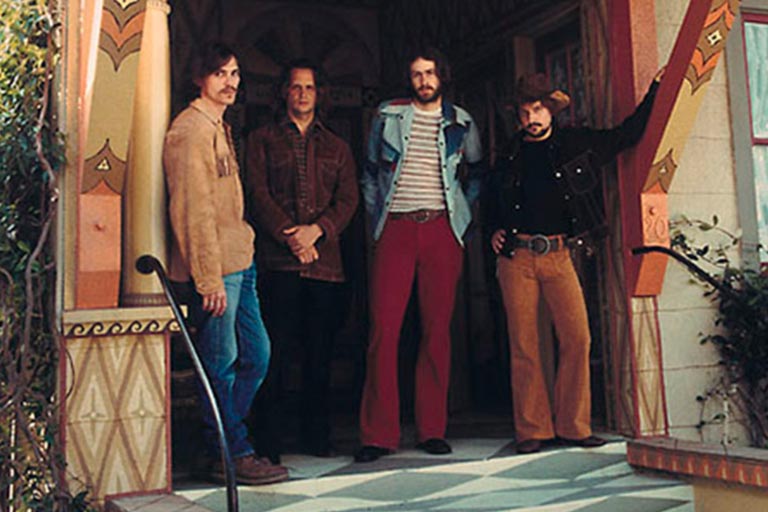
I am probably not alone in having Almost Famous to thank for my at least once a week Tiny Dancer habit
Cameron Crowe likes to have a sing-a-long-a-scene in his films and in this particular production it is that bit on the bus where the band and their ‘aids’ sing an a capella rendition of Elton John and Bernie Taupin’s paene to California’s bounty of beautiful women.
Whilst a splendid scene it also serves as a good illustration of a lasting effect of films like this, an effect that is described perfectly by the Welsh word hiraeth, a word that has no definite translation but suggests a kind of misplaced nostalgia, a slightly melancholic yearning for a time that you have no actual physical experience of living. Related to film, this is the effect of fictional memories which we mentally construct after viewing period films, amplified by our personal enthusiasms for both the important and the ephemera emanated by a given historical period.
A serious case of nostalgia is symptomised by a heavily idealised view of the past, indeed, much like Almost Famous itself. It boasts a great script and some excellent performances (Philip Seymour Hoffman as Lester Bangs soliloquising on the meaning of a vocation as a writer comes to mind) but more standout were the graphic elements of the production design. As a retrospective recreation of something that was once a reality the collateral on show was of utmost importance. It was therefore very necessary that the Stillwater logo looked like it could have been drawn by the same person that did the one for Crosby, Stills & Nash, ditto any featuring album sleeve, poster, ticket stub, t-shirt, venue marquee, etc, etc.
In those terms, the products of nostalgia, far from being cheap imitation, should be viewed as being more authentic in graphical function than the real thing
The point that I am striving for is that nostalgia very often has a negative connotation, particularly when talking about graphic design and popular music. I would go so far as to say that when we say graphic design in this context what is brought to mind are the products stocked by Portobello Road gift shops rather than serious artistry. But the reality is that period recreation is a privileged process wherein the makers are able to have an overview of the collective archive of everything surviving to then cherry-pick the most relevant for their purposes.
Almost Famous is the story of 15-year-old William Miller, an unusually young writer for Rolling Stone, on tour with Stillwater, a rock group struggling to live with burgeoning fame and each other. If nothing else it is a lovingly constructed period piece, functioning as it does as a dramatisation of director/writer Cameron Crowes’ own career beginnings as a teenage music writer hanging out with the likes of Led Zeppelin and Lynard Skynard.
More importantly than being a film about coming of age or the tribulations of being either a career musician or writer, it is a film about graphic design. This is not in the sense that the film talks openly about graphic design but rather that it serves as an integral part of the mise-en-scene, which is not so surprising given the special relationship that graphics and music have always enjoyed.
The outcome, particularly when fictional and not a representation of actual existing material, needs to work hard in order to avoid any parody and pastiche that may let the script and the actors’ performances down. For a sense of nostalgia to be established the realism has to be complete. In those terms, the products of nostalgia, far from being cheap imitation, should be viewed as being more authentic in graphical function than the real thing. After all, would an unconvincing recreation make us wish we were on a Greyhound bus group-singing AOR?
